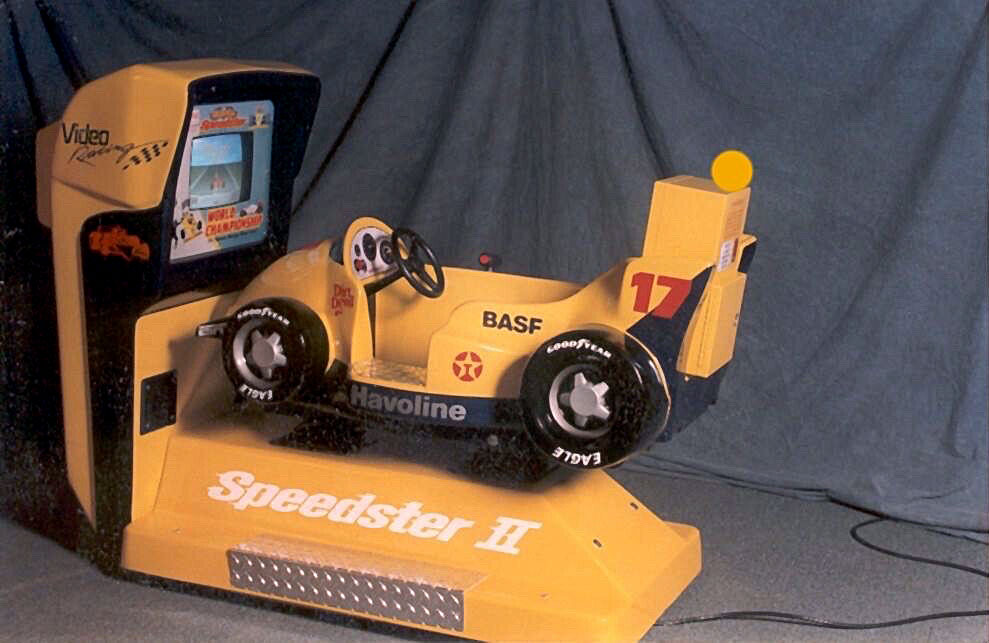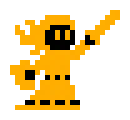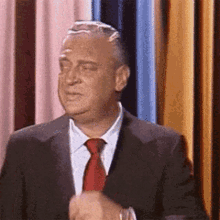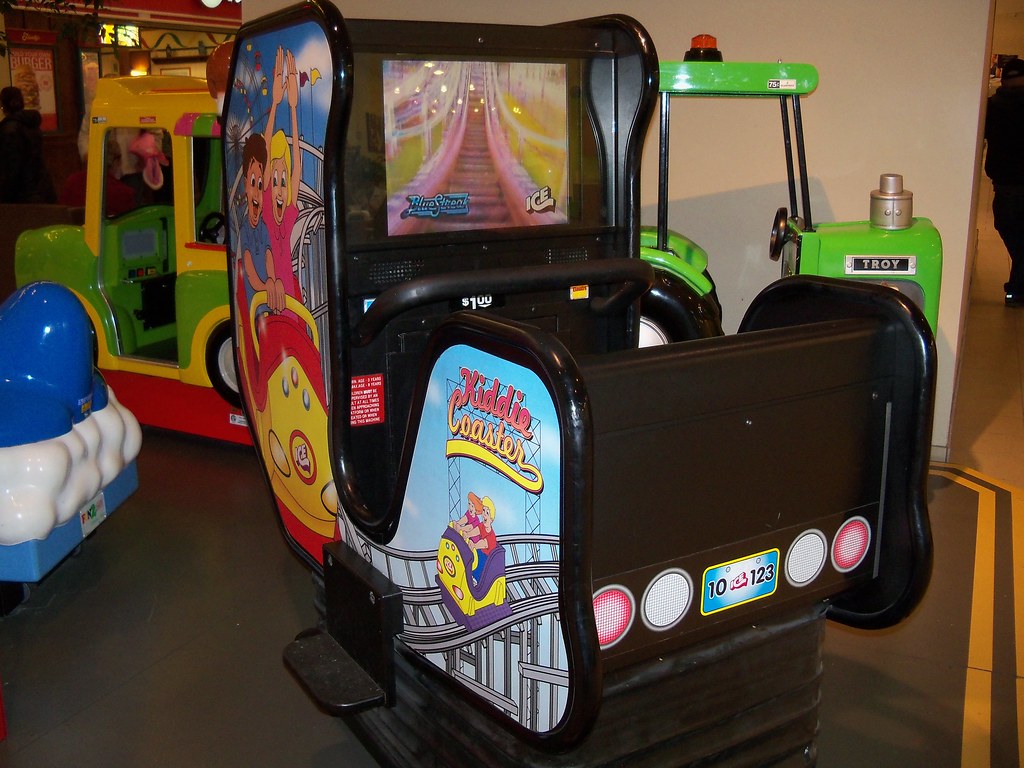stranno
Member
Yes. Apparently they were going to spend Atari Jaguars in this game.

Founded in St. Louis, Missouri, in 1968 by businessman Norwood Veatch Sr., Carousel International was one of the first major players in the kiddie ride industry. Their trademark merry-go-round cabinets were their big initial success, with Carousel executives claiming it single-handedly upped the market from dimes to quarters. Merry-go-rounds were always their top priority (see: company name), but other kiddie rides would make their way onto storefronts. Popular models included Sammy-Saurus, the loveable riding dinosaur; Skycopter, a replica police helicopter; and Speedster, a racecar with an LED dash panel and a noisy toy horn.
By the mid-90s, Carousel had become a well-established name. The company had moved to the city of Eldon and was now operating out of an 80,000 sq. ft. factory. Norwood’s grandsons Brad and Steven would join the family business as VP of Operations and sales manager, respectively. Carousel was now working with establishments like Walmart, Chuck E. Cheese, and K-Mart. The kiddie ride industry was getting bigger, but with that came problems. “Today’s kiddie ride operator is faced with similar challenges as amusement operators. While revenues have grown, so have expenses.” Veatch told Play Meter magazine in March 1994. “Traditional rides, like the western horse, will always be popular with children. However, history has a way of repeating itself, and rides will cost more to buy and operate, requiring a higher price per play. Much like in 1968, it will take innovative products to effect a change.”
To adapt to 90s standards, Carousel had to come up with new, high-tech rides. They had a plan to incorporate video screens on their models, and it started by purchasing hardware from one of gaming’s biggest names—Atari.
1995 was not the best year for Atari. Sales of their 64-bit Jaguar were substantially below the company’s expectations. A $100 price drop got done to compete against the Sega Saturn and PSX, but it did little to help sell the remaining stock. According to their annual report, Atari reported a loss of $49.6 million the whole year—roughly 55% of that money got lost during the last three months. Atari tried to sell as many Jaguar units as possible, so Carousel International’s approach was a stroke of luck.
Carousel’s first Jaguar projects were sequels to their Speedster and Skycopter rides. Mario Perdue, a programmer at Indiana-based developer L4 Software, got contracted to do the games. Perdue had previously worked with the Jaguar on the Breakout update Breakout 2000, so he was familiar with the hardware. According to Perdue, Speedster II got completed on December 5, 1995; Skycopter II got completed shortly after. There are conflicting arguments on whether these rides were released or not. While most sources claim the sequels saw a limited release, some speculate that Carousel scrapped the project due to the Jaguar’s reliably in wet or hot environments. Only one photo for each ride is known to exist, and they both come directly from Mario himself. Carousel sales manager Steven Veatch briefly mentions Speedster II in a 2013 interview with St. Louis Magazine, further adding weight to the theory that the ride released. It’s hard to know for sure.
Founded in St. Louis, Missouri, in 1968 by businessman Norwood Veatch Sr., Carousel International was one of the first major players in the kiddie ride industry. Their trademark merry-go-round cabinets were their big initial success, with Carousel executives claiming it single-handedly upped the market from dimes to quarters. Merry-go-rounds were always their top priority (see: company name), but other kiddie rides would make their way onto storefronts. Popular models included Sammy-Saurus, the loveable riding dinosaur; Skycopter, a replica police helicopter; and Speedster, a racecar with an LED dash panel and a noisy toy horn.
By the mid-90s, Carousel had become a well-established name. The company had moved to the city of Eldon and was now operating out of an 80,000 sq. ft. factory. Norwood’s grandsons Brad and Steven would join the family business as VP of Operations and sales manager, respectively. Carousel was now working with establishments like Walmart, Chuck E. Cheese, and K-Mart. The kiddie ride industry was getting bigger, but with that came problems. “Today’s kiddie ride operator is faced with similar challenges as amusement operators. While revenues have grown, so have expenses.” Veatch told Play Meter magazine in March 1994. “Traditional rides, like the western horse, will always be popular with children. However, history has a way of repeating itself, and rides will cost more to buy and operate, requiring a higher price per play. Much like in 1968, it will take innovative products to effect a change.”
To adapt to 90s standards, Carousel had to come up with new, high-tech rides. They had a plan to incorporate video screens on their models, and it started by purchasing hardware from one of gaming’s biggest names—Atari.
1995 was not the best year for Atari. Sales of their 64-bit Jaguar were substantially below the company’s expectations. A $100 price drop got done to compete against the Sega Saturn and PSX, but it did little to help sell the remaining stock. According to their annual report, Atari reported a loss of $49.6 million the whole year—roughly 55% of that money got lost during the last three months. Atari tried to sell as many Jaguar units as possible, so Carousel International’s approach was a stroke of luck.
Carousel’s first Jaguar projects were sequels to their Speedster and Skycopter rides. Mario Perdue, a programmer at Indiana-based developer L4 Software, got contracted to do the games. Perdue had previously worked with the Jaguar on the Breakout update Breakout 2000, so he was familiar with the hardware. According to Perdue, Speedster II got completed on December 5, 1995; Skycopter II got completed shortly after. There are conflicting arguments on whether these rides were released or not. While most sources claim the sequels saw a limited release, some speculate that Carousel scrapped the project due to the Jaguar’s reliably in wet or hot environments. Only one photo for each ride is known to exist, and they both come directly from Mario himself. Carousel sales manager Steven Veatch briefly mentions Speedster II in a 2013 interview with St. Louis Magazine, further adding weight to the theory that the ride released. It’s hard to know for sure.
Speedster II (Atari Jaguar, Prototype) – Gaming Alexandria
 www.gamingalexandria.com
www.gamingalexandria.com






